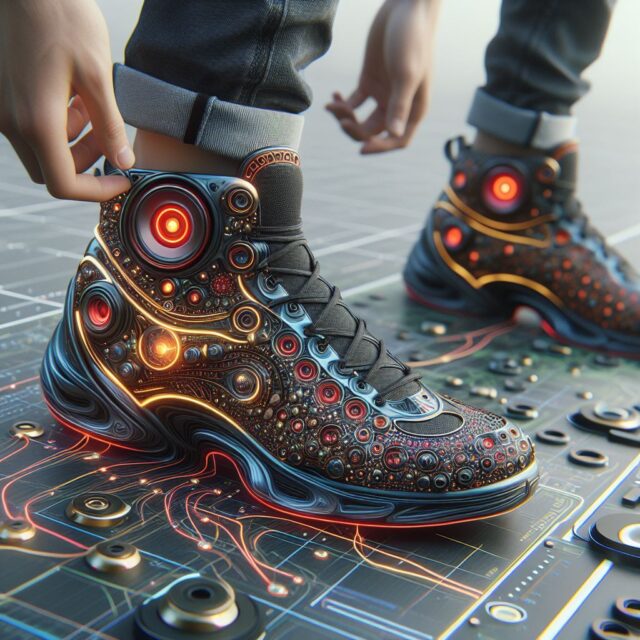By Amit Chopra, Lavipal Singh and Vikas Bagga
“It was the best of times, it was the worst of times; it was the age of wisdom, it was the age of foolishness; it was the epoch of belief, it was the epoch of incredulity; it was the season of Light, it was the season of Darkness; it was the spring of hope, it was the winter of despair; we had everything before us, we had nothing before us; we were all going directly to Heaven, we were all going the other way.” The words from the famous Novel “The Tale of Two Cities” in 1859 by Charles Dickens sound so oracular for the times.
Content
In this era of “Digital Darwinism” The idea of machines would outsmart humans has long been the subject of science fiction with numerous movies, articles and books related. And the way the technology of present times is progressing seems to make us believe that science fiction could soon become fact.
As society and technology evolve faster than our ability to adapt, businesses are being advised to navigate this era of rapid change. We try to bring PERSPECTIVE for Generative AI (Gen AI) to understand its technology, usages, execution, challenges and dangers about the concept Generative AI presenting. A technology which claims to be the biggest change for way of future working and adapt to the evolution of customer and employee behaviour influenced.
Fascinating journey of Generative AI
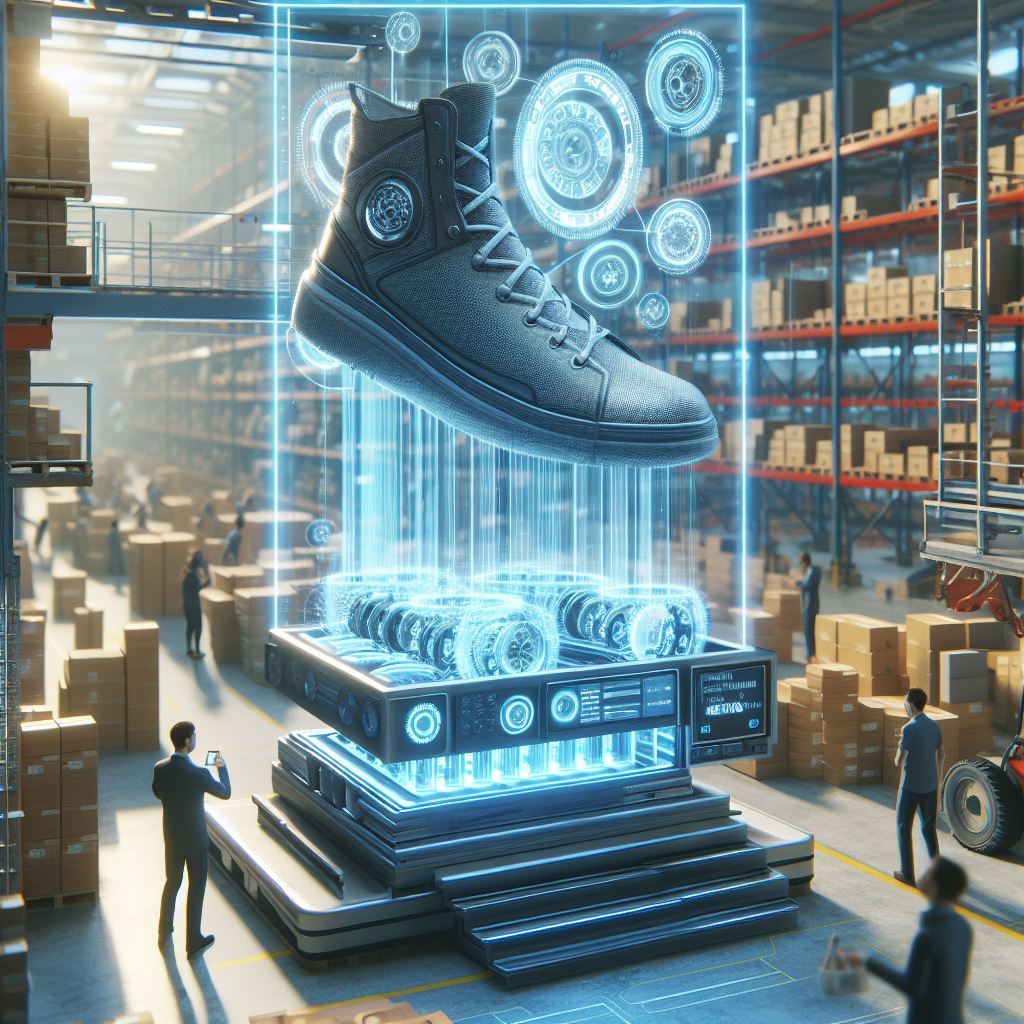
The concept of Generative AI may seem contemporary, but its origins trace back surprisingly far. In fact, it was initially conceived in the 1950s, during a period when scientists were exploring the development of machines capable of emulating human intelligence. The initial generative models followed rigid rules and produced simplistic outputs. One notable milestone was the creation of the Eliza chatbot by Joseph Weizenbaum in the 1960s. However being rule based it had limitations. Vocabulary being restricted, repetitive and predictable responses, without context awareness struggled with coherent statements, and often produced formulaic answers.
Fast-forward to the 21st century, Gen AI has undergone remarkable transformations, as a result of advancements of continuous algorithmic progress over the past three decades. Today, generative models leverage deep architectures to generate new content, like images, videos, audio, or text, that imitate the style and features of actual data. It leverages techniques such as deep learning fuelled by neural networks and transformers, excel at capturing complex patterns in data, natural language processing, sophisticated text generation, generative adversarial network transforming computer vision, Image Synthesis, and Probabilistic Models and Variational Autoencoders to predict probabilities of input data, and discover underlying patterns from input data to generate new content that adheres to these distributions.
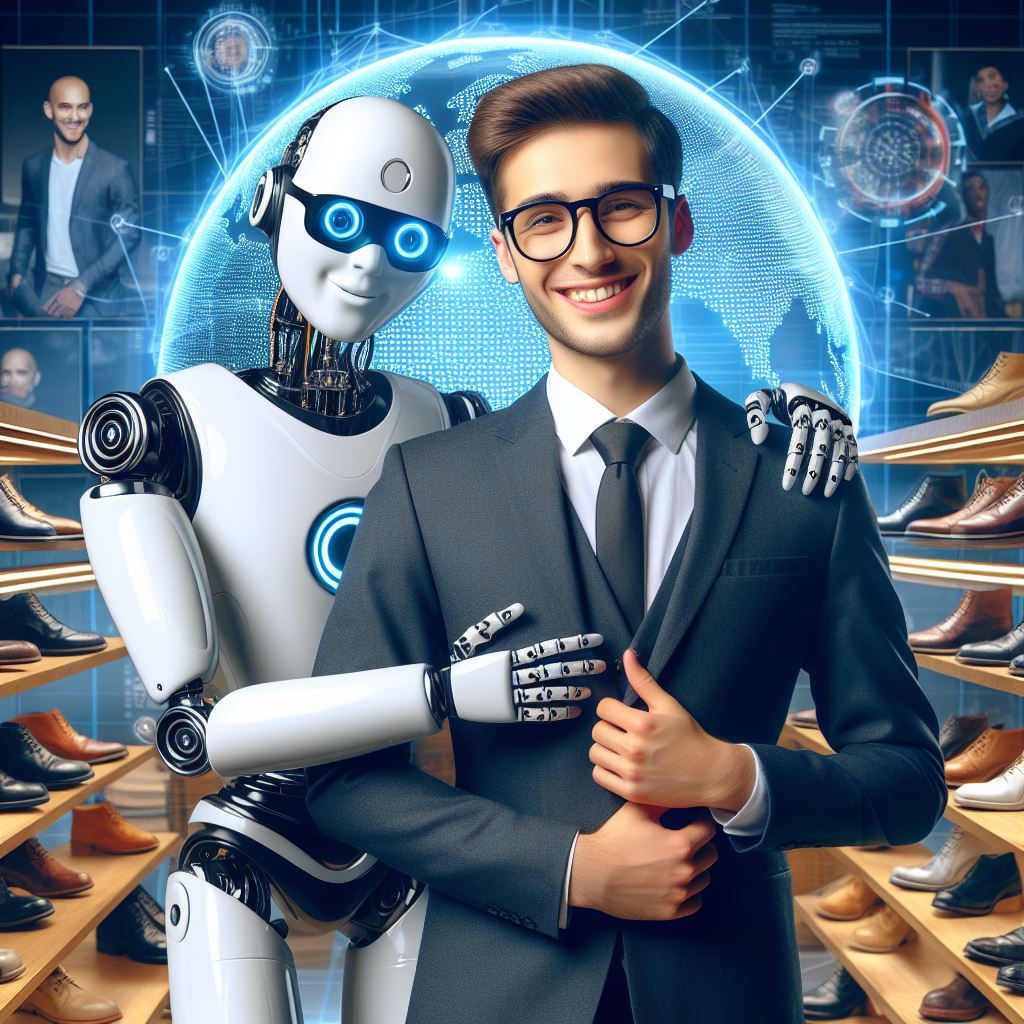
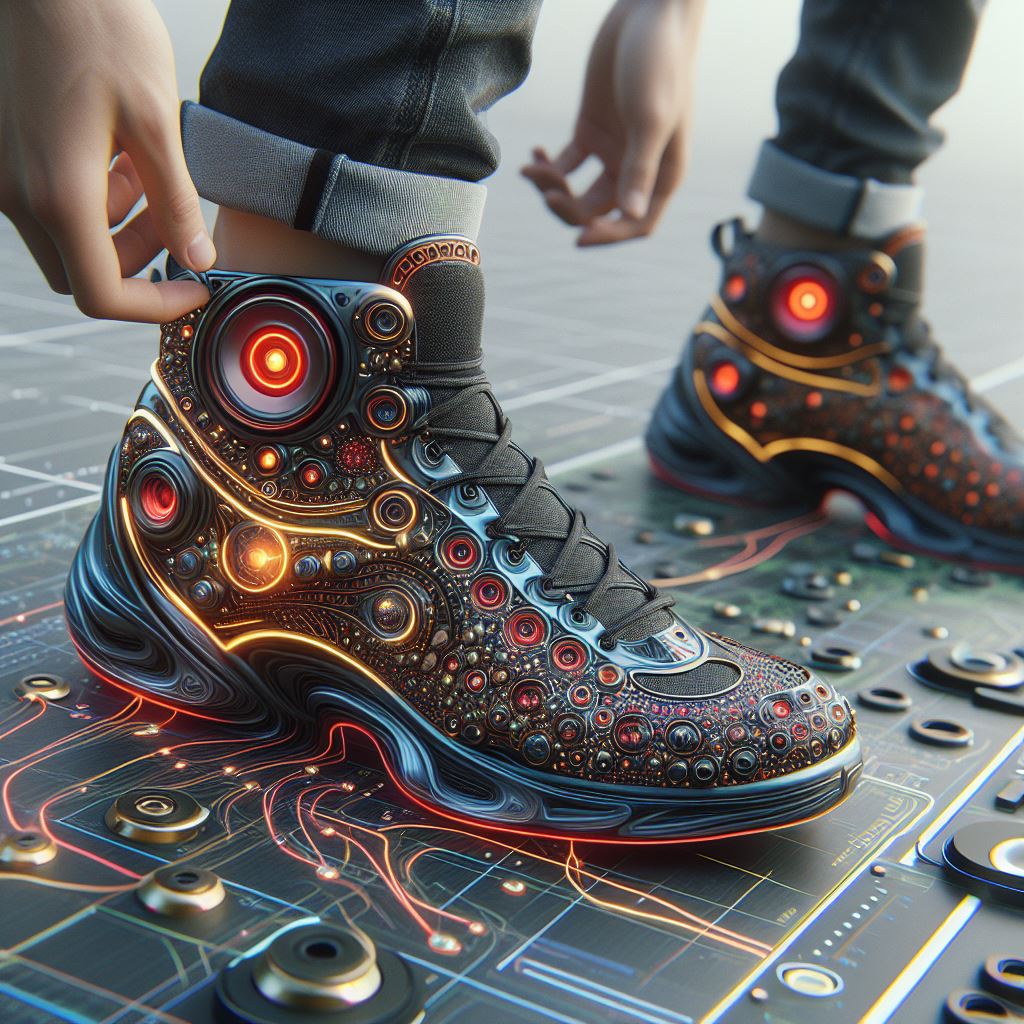
Gen AI’s impact extends beyond academia. It has democratised storytelling. Brands of all sizes can now create compelling narratives, leveraging AI’s creative potential. As technology continues to evolve, the competitive landscape will be forever transformed. In short, Gen AI has come a long way – from Eliza’s rule-based dialogues to today’s sophisticated models. Its ability to generate content aligned with real-world patterns opens up exciting possibilities for the future.
ChatGPT’s Launch in November 2022, Ignited the Generative AI Race. OpenAI ChatGPT became an overnight sensation with more than a million users within five days of its launch. The media explosion with coverage and analysis led to the push felt among leaders and decision-makers in business, to start acting upon this new trend.
“Is this hype? Is it real? What’s there?”
With metaverse, crypto and sustainability losing its sheen Generative AI (Gen AI) seems to be emerging technology that has had such a rapid pace of innovation and adoption not even observed during metaverse or blockchain in recent times. It seems have caught the hype in fashion, retail, and services segment as the next revolutionary technology, promoted as the next big change like web and social media which would bring major revolutionary change in people’s everyday lifestyle. Such is the evolutionary momentum that the Top management of many organizations are constantly learning and trying renew their AI literacy.
About a year ago, there was considerable scepticism within the industry regarding the promises made by GenAI proponents. People were questioning whether it was mere hype or if the technology was genuinely impactful. However, fast-forward to today, and we’ve witnessed significant progress. There has been extensive experimentation, new development processes, and numerous public examples to learn from.
While some aspects are still in progress, many now recognize that GenAI is indeed a real and valuable technology. Jamie Dimon CEO JP Morgan Chase in letter to shareholders compared transformational impact of AI to that of Steam Engine. Some analysts referring to AI as ushering in the “Fourth Industrial Revolution.”
Brands; Retail and Marketeers are being strongly encouraged to put a foot in the water, get started. Every fashion, retail conference, events, news conveying not sit on the side-lines FOMO. There is ‘first mover’ advantage, but it’s not too late, but reality it’s still too early. Since expecting perfection on Day 1 from GenAI, would be naive. Whatever applications any organization applies it to is still a long way with small success. In the past year, there has been significant contemplation about the potential applications of GenAI and where it can be effectively utilized. Until recently, those delving into GenAI seriously often held a sceptical view, considering it merely as a large language model and use for content writeup, design, functions like marketing as a good fit.
Where Fashion & Retail Meets Generative AI
The Limitless Possibilities
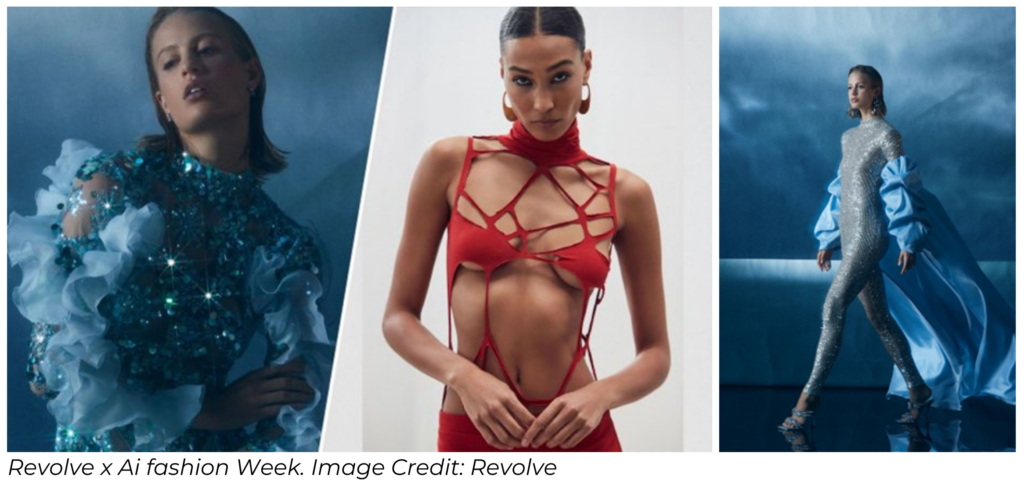
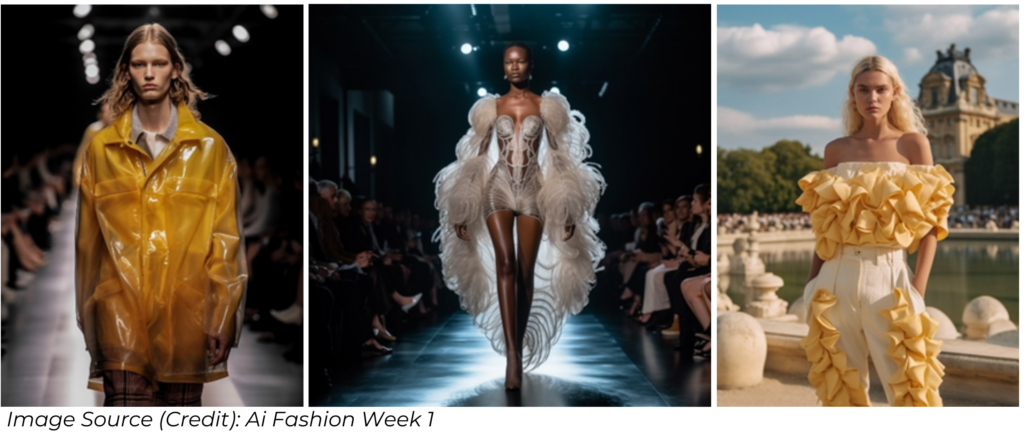
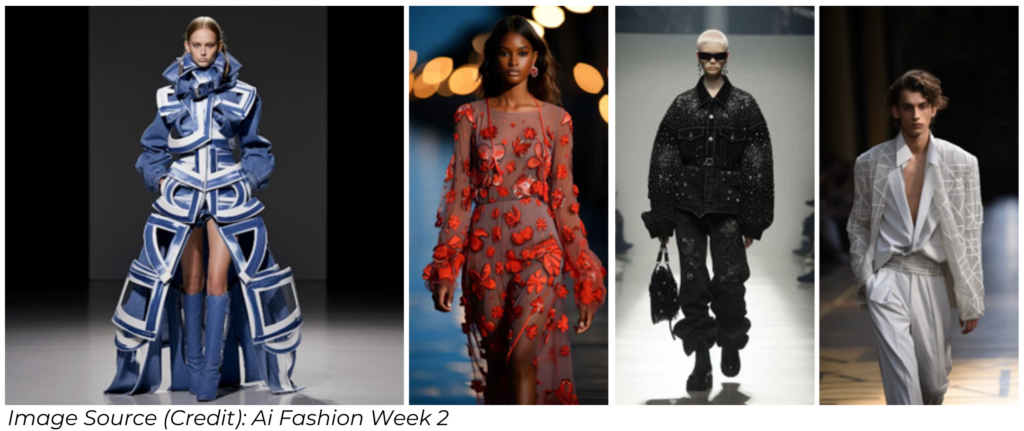
Gen AI can be used across the product lifecycle, reducing lead times, creating efficiencies, and unlocking new ideas. In the rapidly evolving landscape of artificial intelligence, Generative AI is ready to revolutionize our interaction with software, ushering in a new era of brand competitiveness. Gen AI’s impact extends beyond traditional mediums – text, images, videos, music – to encompass code generation, automated processes, and seamless data integration. As businesses increasingly adopt generative AI, adapting to this paradigm shift becomes essential for delivering personalized and efficient customer engagements.
Gen AI is ‘amplifying creativity’ in the fashion Retail world. Being more than a novel addition to the artistic toolkit – it represents a paradigm shift. Image generators powered by Gen AI aren’t mere tools; they’re potential collaborators that redefine creativity. The real choice lies not between humans and machines, but in harnessing their combined strengths to push the boundaries of imagination.
- Fashion’s AI Muse: Generative AI in Product Design
The realm of Gen AI Product design is revolutionizing the global stage, and the fashion sector remains at the forefront of this transformation. Image generating tools, craft visually appealing artworks, converge with AI fashion design, utilizing generative AI to shape upcoming fashion trends. Picturing a program for designing clothes, shoes and accessories with AI that can then turn into a reality. Images down to finer details like product shape, colour preferences, materials, textures, shapes, and design elements are GenAI-generated using a prompt. The application use is not just limited to product design image, but creating product sheets, advertising campaigns. Product and Brand managers are getting acquainted with AI tools like Dall-E, Midjourney, besides others. Let’s dive into few real-world cases from Nike, Tommy Hilfiger, JACQUEMUS x Nike, Revolve and AI Fashion Week – New York.
Nike designers Inspired by the tastes of its athletes used a combination of generative AI tools and 3D rendering software to dream up haute line of sneaker-inspired gear in only a few weeks for 13 of its Olympic athletes with AIR Technology.
Marco Simonetti produced concepts for JACQUEMUS x Nike reflected what’s Possible With AI-Generated Design, that deserved a life beyond the digital screen.
Online Retail brand Revolve Launched Clothes based on designs from the winners of AI Fashion Week. The initial release included 10 to 12 pieces from each of the winners, all designed with Gen AI and manufactured by Revolve. Two of the winning collections came from designers with no fashion background. The winners designed their collections using AI image generators Midjourney and Stable Diffusion, and in some cases editing in Photoshop.
Through Gen AI, new emerging designers, even without fashion background but with creative instinct are able to be delivering in unique ways, using the new crop of generative-AI tools.
After the groundbreaking success of inaugural AI Fashion Week in New York, the event was followed by its second season in Milan and New York in November-December 2023. The event marked a pivotal moment in the fashion industry’s evolution with deeper dive into the intersection of fashion and technology, as a transformational force shaping the future of style. From virtual front rows to holographic models, AI Fashion Week is pushing the boundaries of imagination and reinvented the traditional runway experience and firmly established itself as a trailblazer, guiding the industry toward a future where innovation and style coexist in perfect harmony.
Personalization and Sustainability may be major frontier where GenAI may make strides. The technology’s ability to tailor designs to individual preferences for consumer experience. Imagine an online platform where a customer inputs their style preferences, desired colour palette, and fabric choices. GenAI through an extensive database of designs and generate an array of bespoke options that cater specifically to that customer. This level of customization is not restricted to aesthetics alone. GenAI can factor in ergonomic data, climate conditions, and even the customer’s daily routine to suggest design modifications that enhance comfort and functionality.
Not just the fashion designers but the brands are engaging consumers too using the potential Gen AI offers. Nike launched a campaign called “By You” that uses Gen AI allow customers to design their own shoes. Over 100 million pairs of shoes were customized using the “By You” platform. Nike By You offers multiple avenues for customers to personalize their sneakers such as online, in-person at selected stores, and via their mobile app. During the design process, customers can enjoy a 360-degree view of their designed shoe.
Gen AI holds the brush that could paint a new dawn for fashion – one where artistry meets analytics, personalization harmonizes with production, and sustainability weaves through the very threads of the fashion we wear.
- Marketing & Retail
Gen AI is helping with the wide range of use applications across the fashion industry to help support for crucial challenges the Retail & Marketing teams encounter during operations. From Transforming content creation, brand communication, Marketing Analytics to Retail optimization, impacting Fashion industry with substantial profit prospects.
Brands are leveraging GenAI to craft immersive experiences, deploy brand-owned virtual influencers, and enhance clienteling services. As technology democratizes storytelling elements like innovative content creation and campaign generation to generate new designs, patterns, and styles, that would reshape the competitive arena, offering boundless possibilities. AI’s potential in marketing is undeniable. It promises disruption, innovation, and powerful results.
- Marketing Campaigns, Virtual Fashion Models and Brand Representation:
Gen AI tools are being used by fashion Marketers to leverage AI-generated visuals to enhance their storytelling, create eye-catching creatives, social media posts and produce visually engaging presentations. Brands like Moncler, Etro, Valentino, Casablanca, Lenskart, Baskin Robbins and print fashion magazines have already taken their first steps using AI technology for their campaigns and creative creations. Here’s looking at the hybrid world between human and machine created through generative images for imaginative campaigns of some of fashion brands created harnessing Gen AI.
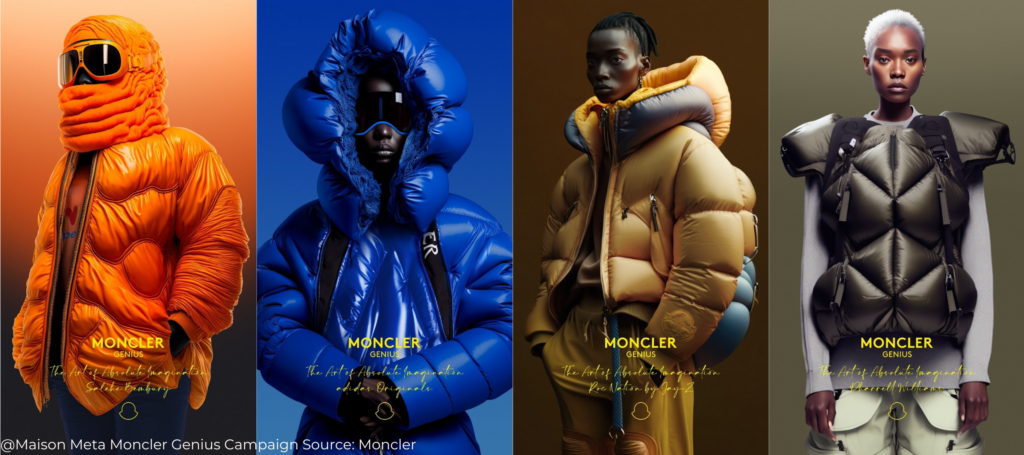
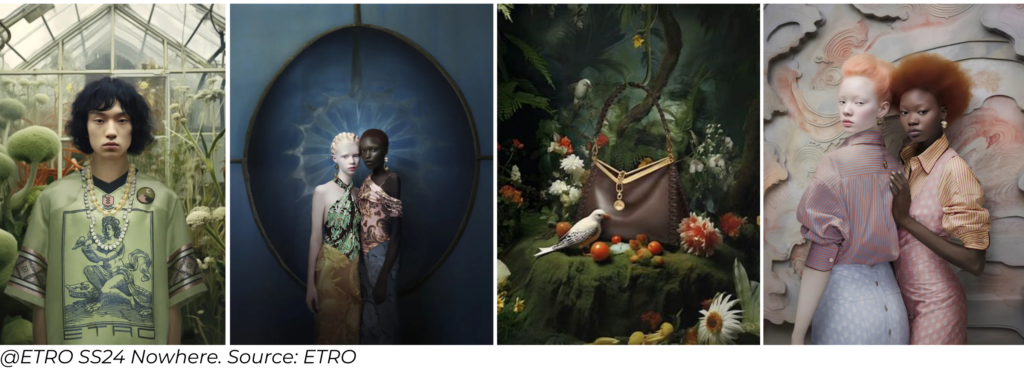
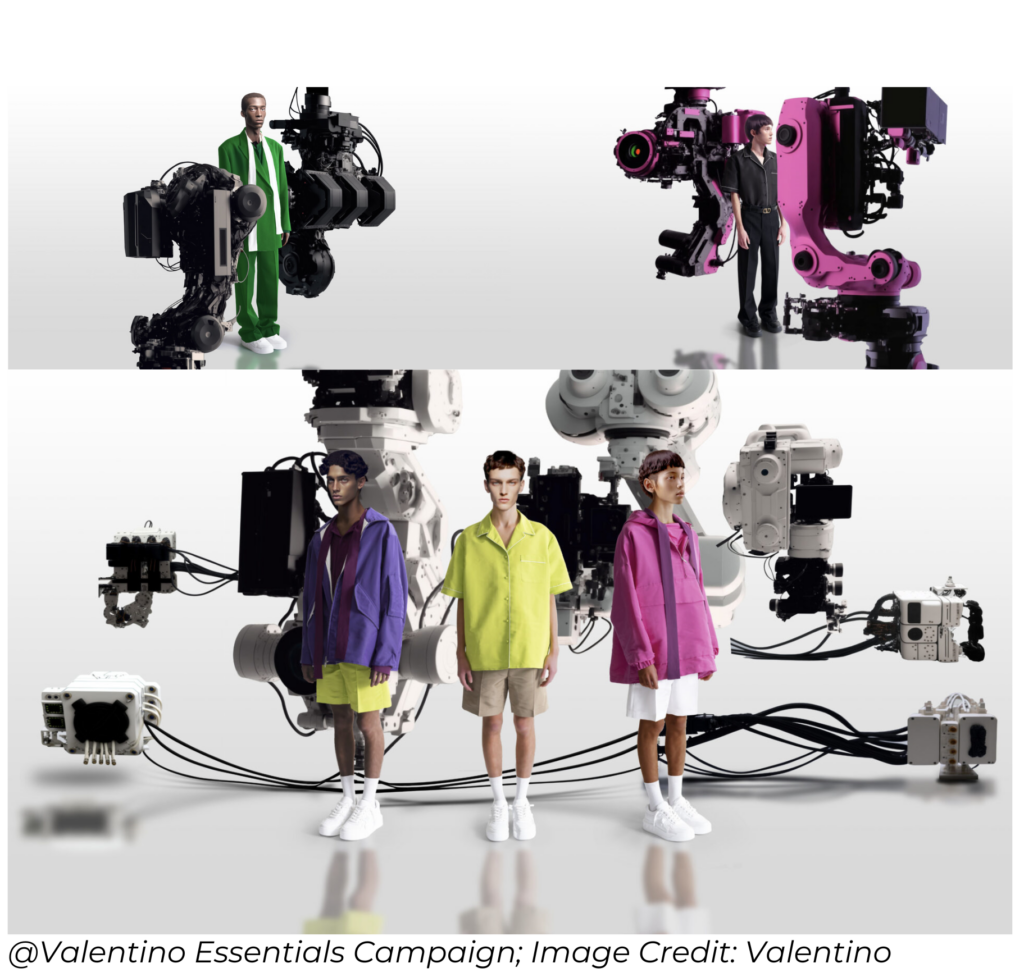
Maison Meta and Creative Agency WeSayHi collaborated to create the AI campaign for Moncler Genuis, highlighting test collaborations with various fashion designers and brands, including Adidas Original, Pharrell, Palm Angels, Alicia Keys, Salehe Bembury, and Roc Nation by Jay-Z.
ETRO SS24 advertising campaign “NOWHERE: OUT OF TIME, IN ANOTHER SPACE” stems from an encounter between imagination and Artificial Intelligence. The inspiration takes the idea of the Nowhere to a higher level of expression, a place of imagination only. Creative Director Marco De Vincenzo converses with the digital artist and prompt designer Silvia Badalotti to create a series of scenes and paintings. The images resulted in a series of fantasy scenarios ranging from pastel-hued architectures to lush natural landscapes and astral maps. Just like a painting, but the brushes and colours are replaced with pixels and on-screen visuals. Scenarios are invented, just as bodies: physical and spatial utopias, beyond biology and beyond logic. The energy that they are born from and pervades them is human. The models wearing the brand’s men’s and women’s spring 2024 collection were also generated through AI, with a cast that intended to evoke “a humanity that is both familiar and alien”.
Valentino Essentials line campaign shot using Gen AI, explored the relationship between artificial intelligence and fashion, the imagery celebrating relationship with technology and its game-changing possibilities. Featuring models against a white background and large machinery, the campaign images exemplified by the way the visuals were created.
The Parisian fashion house Casablanca, renowned for its adherence to traditional and classic methods, unveiled its Spring/Summer 2023 campaign, “Futuro Optimisto” using Gen AI In a collaboration with British photographer and AI artist Luke Nugent, the campaign seamlessly merged AI and photography, producing images that blur the boundaries between reality and fantasy, harmoniously blending authentic and imagined worlds through sophisticated AI technology.
Moncler and Adidas Originals’ campaign titled ‘The Art of Explorers’, pushed the boundaries of co-creation with forward-thinking designs advancing the notion that function creates unlimited potential for discovery. The campaign turned its attention to explorers themselves, represented through a series of AI-generated adventurers.
In partnership with a UK-based hedgehog lab (HHL), Under Armour leveraged the power of Gen AI to create ‘The Ultimate Team Talk’, an inspirational speech for the start of the European football season. Using its global football Athletes including Trent Alexander-Arnold (Liverpool) and Antonio Rüdiger (Real Madrid), harnessing the best possible language, sentence structure, cadence, and energy, designed to mentally prepare team sport athletes ahead of competition. The purpose was to explore how Gen AI can create the most inspirational team talk of all time. HHL used a combination of ChatGPT’s web interface to undertake prompt engineering and a bespoke copy tool built to enable an iterative approach through the individual stages of review.
Currently, there’s still a substantial amount of manual work required to fine-tune and perfect AI-generated images, so they look real. The craft of translating digital outputs into tangible luxury still demands a human touch.
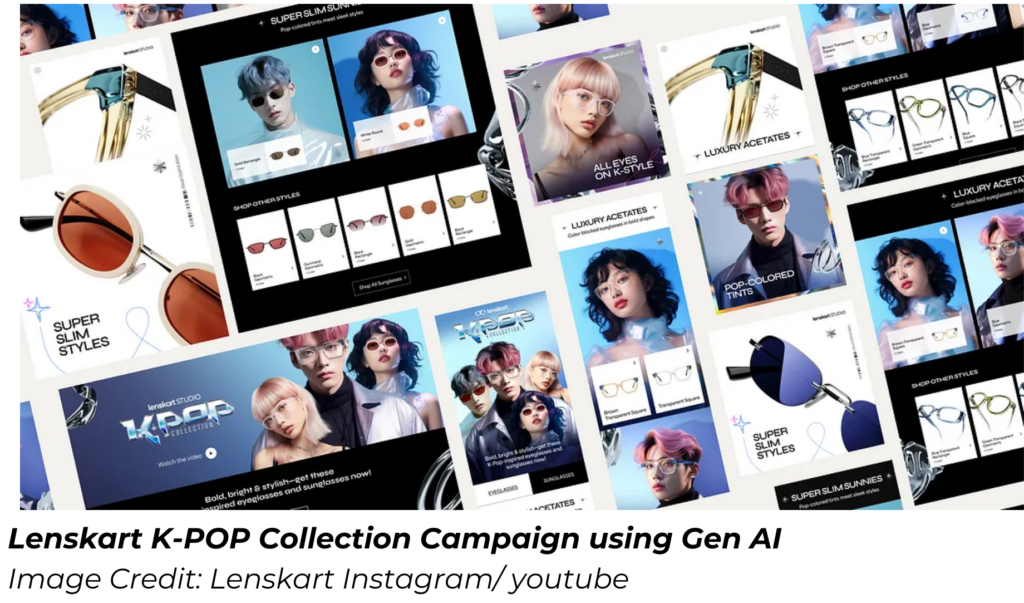
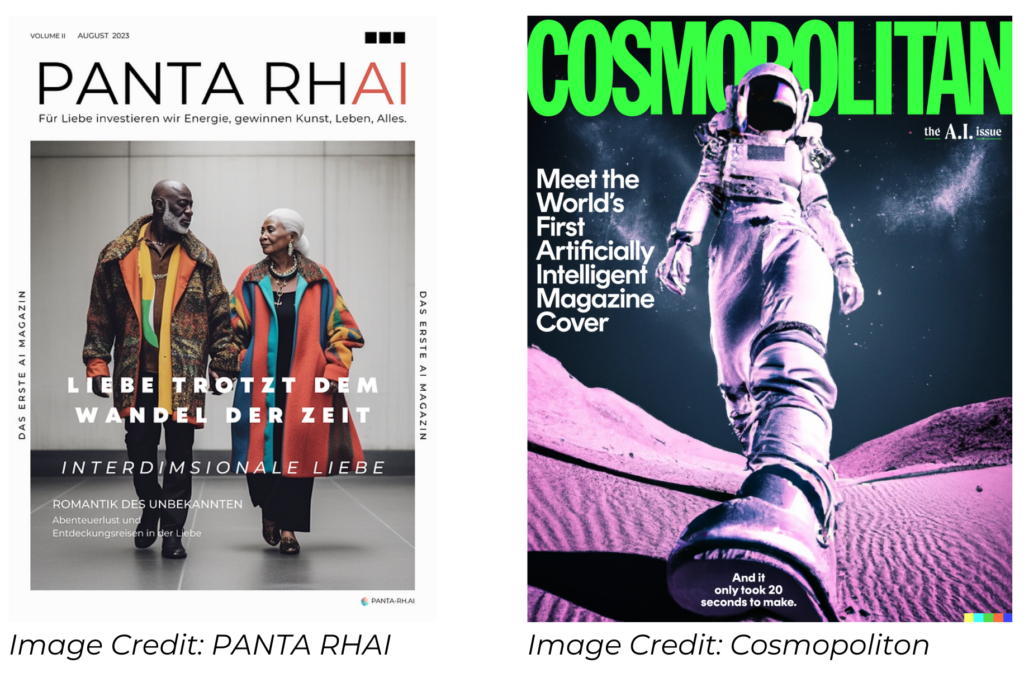
With Lifestyle Magazines PANTA RHAI written and designed entirely by Gen AI, using prompts by just team of two German people and taking five days to create or Cosmopolitan cover being designed using DALL-E 2 in less than an hour. Gen AI use for showcasing how AI and human minds can work together to create compelling content while simultaneously promoting an open dialogue about AI’s current limitations. Though it raises serious questions far beyond the scope of magazine design: about art, about ethics, about creative team future.
- Content Writeup’s
Marketing content is taking major transformation on how content is created for fashion retail by automating and enhancing the creative process. AI algorithms can automatically generate detailed and attractive product descriptions ensuring consistency, writing compelling ad copy that aligns with brand voice and campaign goals, often with the ability to test different variations to see which performs best. By analyzing customer data, AI can create personalized email campaigns that resonate with individual preferences and past purchasing behavior, increasing engagement and conversion rates. SEO-friendly blog posts are being written that drive traffic to fashion retail websites, often by incorporating trending keywords and topics. AI tools like Attentive AI, are helping in-house marketing teams for Campaign management and manage their workloads more efficiently while reducing the need for outsourcing to creative agencies.
Generative AI is not just automating tasks but augmenting and accelerating the creative process, enabling fashion and retail brand professionals through the technological tools to produce content that is innovative, aligned with consumer preferences and perform tasks dramatically faster and more effectively.
During last year’s investor call, Ralph Lauren CFO and COO Jane Nielsen outlined the brand’s plan to test generative AI for applications such as copy editing, graphics, and computer programming. This strategy aligns with industry trends, as other companies are similarly exploring the potential of this rapidly advancing technology.
- Retail Operations & Marketing Optimisation
Marketers can undertake Predictive & Sentiment Analytics to make data-driven decisions and allocate resources effectively helping them work on more efficient planning. The historical data can help predict customer behavior, churn rates, and campaign effectiveness. Gen AI tools analyze social media posts, reviews, and customer feedback to gauge sentiment to help adjust strategies based on real-time insights.
Recommendation Engines help recommend products, content, and services based on user preferences and browsing history. Personalized recommendations improve engagement and drive sales. Further supporting for Ad Campaign Optimisation by automating ad placement, targeting, and bidding. It ensures ads reach the right audience at the right time, maximizing ROI.
The Retail operations can work to maintain sufficient stock by combining customer purchase data with supply chain analytics. It predicts future buying trends, aligns stock, and eliminates inefficiencies, leading to reduced waste, optimized space, improved customer satisfaction, and higher profitability. Retailers anticipate demand before it happens. By analyzing historical data, market trends, and external factors, retailers can optimize inventory levels and stay ahead of the competition. Algorithms can be trained for Dynamic pricing and promotions to adjust prices dynamically based on real-time market conditions, competitor pricing, and demand. This ensures competitive pricing and maximizes revenue. Retailers can work on marketing campaigns based on individual preferences, behavior, and demographics, optimising product recommendations, and targeted promotions, enhancing customer engagement and conversion rates.
- Customer Engagement, Fashion Trends and Shopping Experiences
In the realm of fashion Retail, Gen AI leveraging advanced machine learning techniques is revolutionising customer engagement, predicting trends, and enhancing consumer interactions, offering significant opportunities for innovation in the fashion retail sector. From creating visual displays, offering virtual try-on experiences, enhancing customer engagement through personalized recommendations using chatbots, and virtual assistants, reshaping shopping experiences by personalizing product pages, simplifying product discovery, and enhancing visual merchandising.
- Revolutionizing Fashion Trends and Personalized shopping experiences
Fashion analytics companies, including Heuritech, utilize AI technology to analyze thousands of runway images each season. By capturing subtle patterns and color schemes, this technology predicts future trends. Brands can leverage these insights to stay ahead in the competitive market.
Gen AI technology has the potential to transform various customer touchpoints, such as e-commerce sites, and in-store experiences. Gen AI-powered experiences mean shopping assistants and personal stylists, so shoppers no longer be reserved for the uber-wealthy. Data-driven personalization deepens brand connection and converts shoppers into loyal return customers.
Kering has launched “Madeline,” an AI-powered personal shopper using OpenAI’s ChatGPT on the KNXT platform. Madeline assists customers with exploring brands like Gucci, Bottega Veneta, and Balenciaga. Functioning similarly to a traditional personal shopper, it offers more than just product suggestions with information on material details, origins, and care instructions. This innovative tool enhances the shopping experience, enabling informed decisions across Kering’s diverse offerings.
Myntra an Indian Fashion e-commerce group has built a whole array of fashion assistants for Customer personalized shopping experience across apparel, shoes, accessories, and beauty segment, pitching big hopes for Generative AI. They are leveraging technology to enhance the customer experience by allowing them to use their own fashion terms and words when interacting with the platform and have personalized shopping experience. Amazon with its Style Snap option for consumer personalization for shopping.
The advancement of AI technology offers exciting possibilities for next-level customer service, particularly in the realm of human-like interactions and multilingual support.
- Chatbots as Customer Service Agents
Developing advanced chatbots was previously intimidating, yet the field has evolved considerably. The limitations of earlier chatbots, to a set of scripted responses, have been overcome by offering personalised responses to any customer question. Presently, crafting a rudimentary chatbot can be achieved in minutes with available tools. The ease of custom chatbot creation symbolizes substantial advancements in simplifying development, heralding the emergence of more sophisticated and precise AI-driven conversational agents in the foreseeable future. Gen AI trained on a company’s internal data – such as transcripts of conversations between customer service agents and customers – can greatly enhance the quality of customer service by spreading best practices to all service agents.
The Estée Lauder Companies (ELC) is enhancing its cloud infrastructure and leveraging generative AI to advance digital experiences across its brands. It utilizes Google Cloud’s AI for real-time customer feedback and innovative business applications, emphasizing high-touch, personalized online interactions. ELC also announced the creation of an AI Innovation Lab in collaboration with Microsoft leveraging cutting-edge Gen AI capabilities in Microsoft’s Azure OpenAI Service to support and build impactful use cases across several areas of ELC business.
Amazon has rolled out a new Gen AI feature that summarizes product reviews for customers. It picks out common themes, key points and summarizes them in a short paragraph on the product detail pages.
- Try-ons in Virtual and In-store: Fashion’s High-Tech Dressing Room
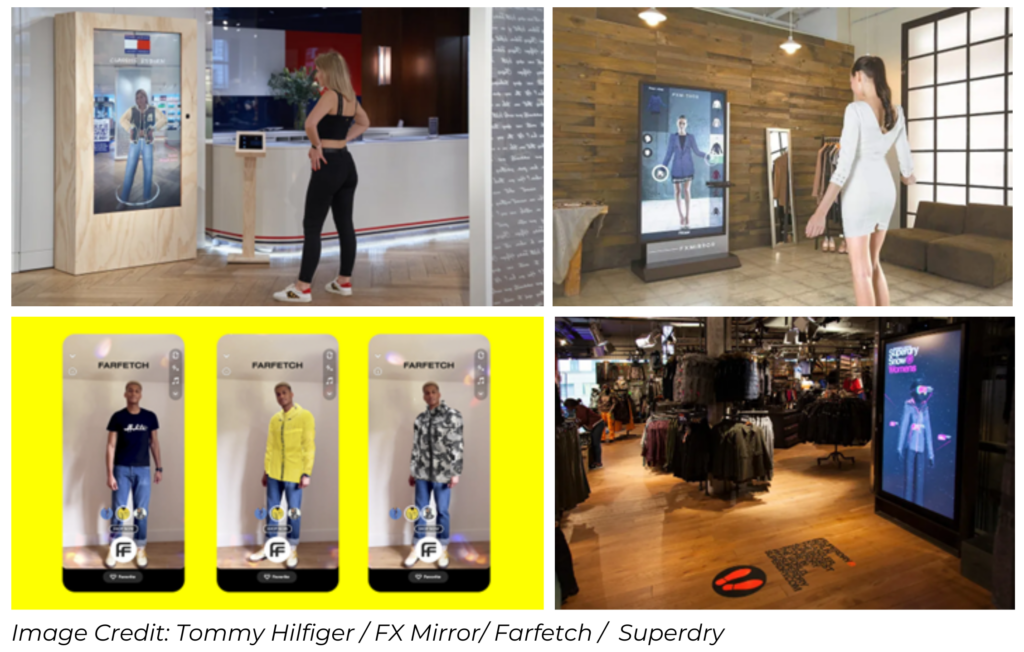
AI-driven virtual fitting rooms using augmented reality (AR) allow customers to try on clothes and accessories online, helping enhance the online shopping experience, reduce return rates, and increases customer confidence in purchasing decisions.
In physical stores, Fashion Brands from Luxury to Premium in physical retail are using AI via smart digital mirrors and interactive displays to create a more engaging and convenient shopping experience by integrating digital capabilities with the physical retail environment. AI powered AR tools, allowing customers to see how a product looks on them without physically trying it on providing a safe convenient shopping experience, to build engagement and inform purchase decisions. Dior, Nordstrom, Tommy Hilfiger, Coty, Superdry, Speedo a few cases with execution.
Gen AI is transforming retail by automating processes, enhancing customer experiences, and optimizing marketing efforts. Whether in physical stores or online, its impact is far-reaching and continues to shape the future of retail.
- Supply Chain; Logistics & Inventory Management
Gen AI can help optimize supply chain operations by generating demand forecasts, optimizing inventory levels, and identifying potential bottlenecks or inefficiencies. Supply chain professionals may focus on analyzing the insights generated for making strategic decisions to improve supply chain performance. They may also collaborate with AI systems to automate routine tasks such as order processing and logistics management.
H&M Group has collaborated with Google Cloud to implement their AI strategy. They are building an enterprise-wide data backbone infrastructure that integrates sales data from online operations, physical stores, and supplier communities. This includes creating a data mesh that synthesizes multi-source data. Algorithms obtained data help inform where and what to restock, current popular merchandise and customer’s preferences. In addition, it helps forecasting of fashion trends by capturing information on search engines and blogs. This information informs everything from how much they buy, when they buy, and where it should be placed in its stores.
Zara the Spanish fast fashion group controls everything from design to display to shipping, gives it rich valuable data gathering at every stage, which can analyzed to identify inefficiencies, pinpoint areas of success, and create accurate forecasting. Through its initiative with associations with Jetlore, El Arte de Medirn a Spanish big data company, and microchips from Tyco on its products, has built AI-powered platform. This helps Zara map consumer behavior into structured predictive attributes, like size, color, fit, or style preferences, have full tracking and visibility over the inventory it can sell, real-time optimization of inventory levels and logistics. thereby helping with its forecasting analytics. It has further partnered with Intel and Fetch Robotics to measure clothing volume in boxes and improve stock inventory.
Another fashion brand Hanes is leveraging generative AI technology to optimize its supply chain, addressing complex questions and making this information accessible to all associates. The company’s use of the Gen AI assistant, powered by OpsVeda, is a transformative step in their supply planning. It integrates with messaging tools like Microsoft Teams, Slack, or Whatsapp, enabling users to gather information through natural language. The information tool has been engineered to use algorithms in order to interpret users’ free-form questions, applying appropriate parameters around the specific user’s questioning and then can be communicated via email, storyboards, or data snippets with the stakeholders and associates. Another brand, Ralph Lauren is planning to implement Gen AI and machine learning for inventory optimization, forecasting, and consumer engagement.
——-
In the words of Edoardo Zegna, the brand’s chief sustainability and marketing officer of Zegna “Technology is a luxury when it makes your life easier. I’ll tell you what a luxury experience is for me. I should be able to walk into a store and there is a room that is only in products of my size. When we offer a more efficient and straight-to-the-point experience, the customer sees the benefit and the spend increases drastically. A customer that is engaged on a one-to-one basis spends 75 percent more.”
——–
The Devices getting Gen AI Smarter – It’s coming to YOU.
Artificial intelligence (AI)-powered chatbots, GPTs, and search engines have become the focal point. The next Gen AI innovation is consumer hardware devices with artificial intelligence. There are glimpses of this trend already.

Laptops and mobile devices use a more specialized forms of AI, often referred to as Narrow AI. These systems are designed to handle limited specific tasks, such as chat assist, Smart search, voice recognition, live translate, transcript assist, image processing, or predictive text. The integration of Gen AI into devices involves the use of small language models, processing data directly on the device using Edge Computing, AI accelerators and Algorithms helping optimized Hardware and Software and hybrid approach of on-device and cloud support, thus balancing performance, data privacy, power consumption, and cost.
HP Envy laptop with a dash of Gen Al, with a Microsoft Copilot button on the keyboard which activates the chatbot for Gen AI features such as assisted search, content generation and more. Samsung Galaxy latest flagship AI model in collaboration with Google for AI smarts. An easy search by just selecting without changing apps. Chat Assist, a convenient solution for adjusting tone, real time translating, or spell-checking while texting and composing emails, right from the keyboard. The image edits allow to remove unwanted elements and reposition subjects within photos.
There is no dearth of similar cases examples with companies like Dell, Apple, Lenovo, Google Pixel, Motorola, Honor, Xiaomi, others building their own Language models, powering personal assistants, and making devices smarter and unleash the next phase of growth for the industry. Samsung claims that by 2025 AI powered devices to compromise 70% of Sales by 2025.
Threatening Realities
- Creativity – The Two Sides
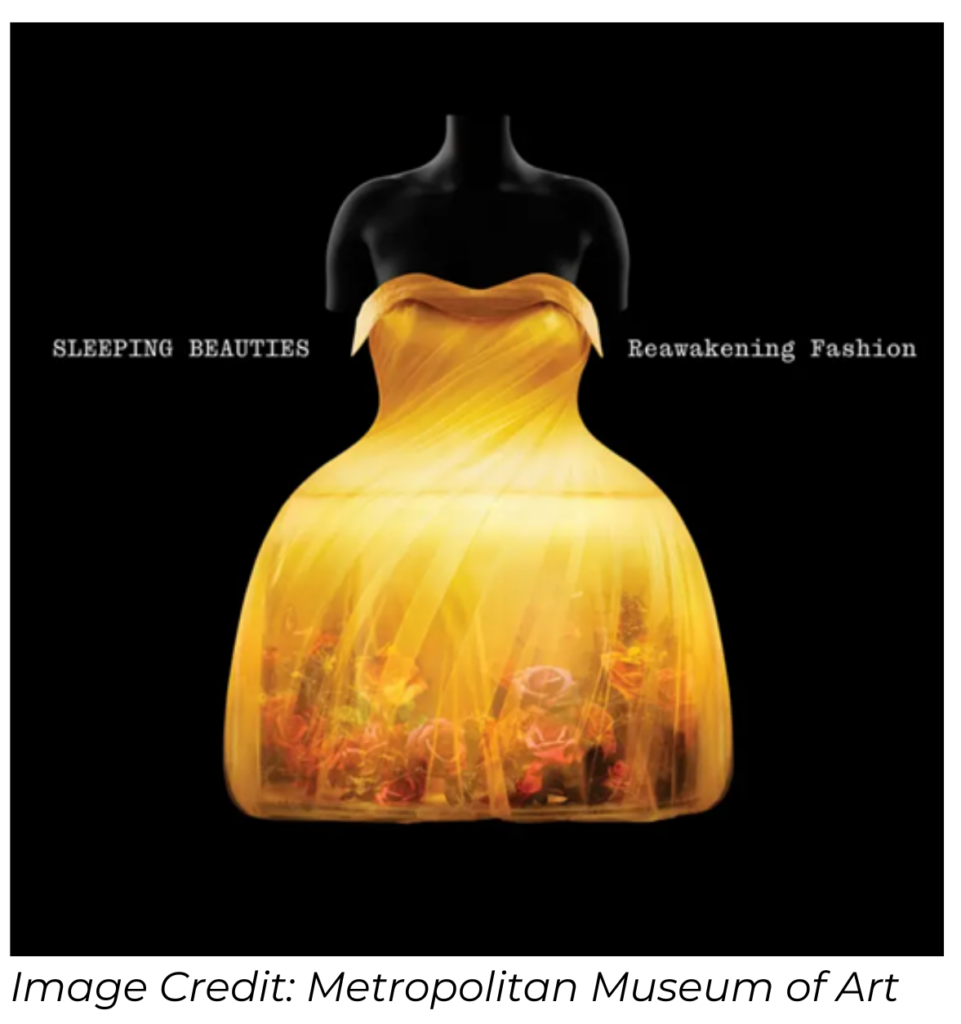
James Cameron, the famous filmmaker known for blockbuster movies like The Terminator and Titanic, talks about his sketching skills with pencil and paper. Creativity has come a long way since then to the era of AI today, but the two have more in common than is thought, he said. “Generative AI that’s really interesting because the data scraped is all the imagery that human beings have created. We’re putting our subconscious mind out into the world, and it’s coming back to us. He conveys That’s why they’re so compelling because it’s really us writ large. But there’s no original. There’s no paint on the canvas. You can use gen AI to create music, but you can’t take it on the road. I think human artists become more important.”
But with changing times, Gen AI may emerge as a powerful Creative tool in the artist’s or marketer’s arsenal. Let’s consider the evolution of photography over the past decade. Ten to fifteen years ago, photographers primarily worked with physical objects. They captured scenes using film or digital cameras, carefully composing shots, adjusting lighting, and selecting angles. The process was hands-on, and the end result was a tangible photograph. Fast-forward to today, and we find that photographers have transformed into CGI directors. Instead of capturing physical scenes, they now create entire world digitally. They direct shots, manipulate lighting, and compose scenes entirely within software. The product – an image – may appear realistic, but it’s often a blend of real and digitally generated elements.
Gen AI may fit seamlessly into this evolution. It may allow marketers, artists, and content creators to generate visuals, whether for advertising, social media, or other purposes. The image may be artificially created, but humans still play a crucial role. They guide the AI, providing input on style, aesthetics, and context. Gen AI becomes a collaborator, enhancing creativity rather than replacing it. In this changing landscape, creatives who thrive are those with a strong sense of style, originality, and adaptability. They understand how to harness Gen AI’s capabilities while maintaining their unique voice. Moreover, they can articulate their creative choices, explaining why a certain aesthetic was chosen or how the AI was guided to achieve a specific look.
So, in reality, Gen AI may not be a threat to creativity; it may turn out to be an enabler. As long as, the artists and marketers continue to evolve alongside technology, they’ll find new ways to express their vision and engage audiences in this exciting digital era.
- The Human Faces & Deepfakes
Brands including Levi’s, Louis Vuitton and Nike have already teamed up with AI modelling companies and say one benefit is the ability to showcase their products on a diverse group of models. But in a field, that’s traditionally idolized physical perfection, AI technology is creating new, and more threatening, realities. creative design and development. The Industry is already seeing use of AI-generated ‘people’ violating their name, image and likeness rights.
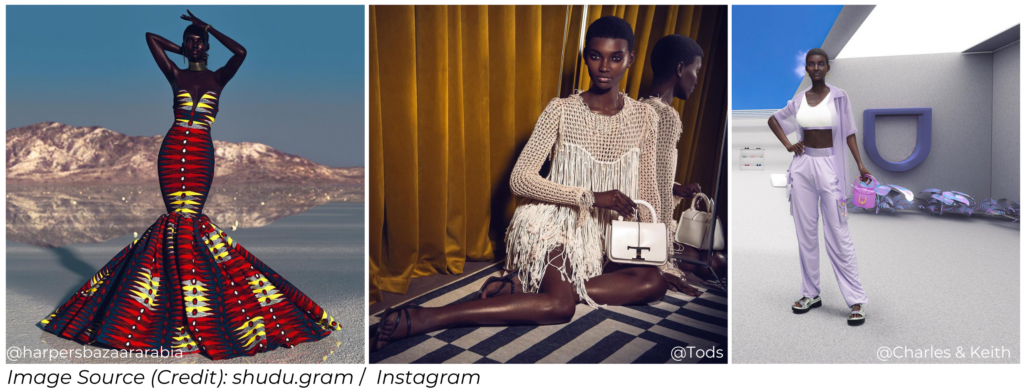
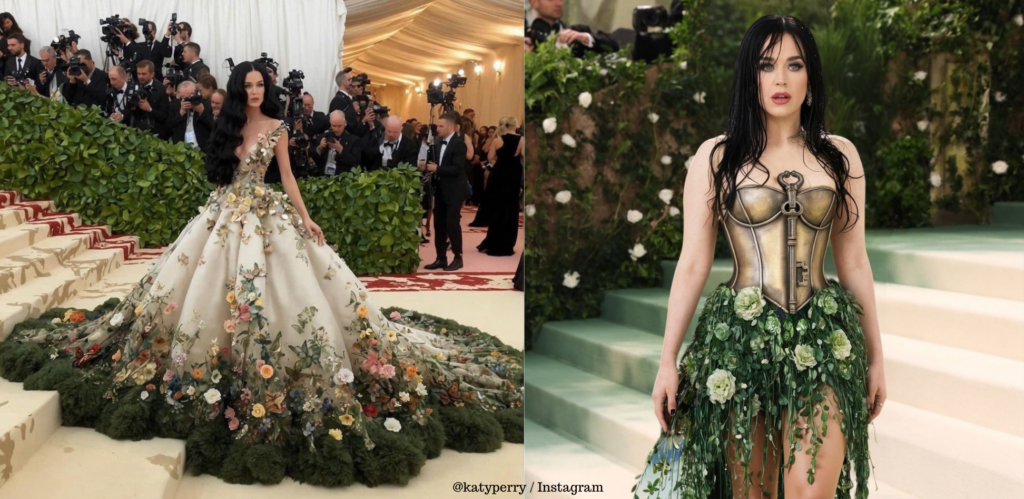
The models are reported to be asked to undergo a body scan for a 3D model of their body or face, without knowing how the scan would be used. Fewer human models also mean fewer stylists, makeup artists, and other industry related professionals.
Shudu a digital supermodel and fashion icon has made quite an impact in the virtual world. With over 241K Instagram followers, the model Shudu has become the face of ad campaigns for brands such as Karl Lagerfeld, BMW and Paco Rabanne, and has more than 2,41,000 Instagram followers. She’s also not real, but rather digitally creation of photographer Cameron James Wilson. Though her main inspiration is a South African Princess Barbie. The real-life inspirations are pulled from so many different women — Lupita, Duckie Thot and Nykhor and even Alek Wek.
“I wanted to create a piece of art, starting from a portrait of a beautiful woman. I was just in that kind of creative hub, locked away in my room, just being creative, being experimental.” – Cameron James Wilson
As MetGala event 2024 progressed in New York, and the music and entertainment celebrities graced the red carpet, they had competition for the public’s attention: GenAI deepfakes. AI took over fashion’s biggest night as fake images of Rihanna, Katy Perry, and Lady Gaga went viral. Katy Perry picture appeared in a post on X, wearing a stunning dress decorated with three-dimensional floral appliqués, which descends to the ground, transforming into incredibly realistic-looking moss. Though the image far from real had over 15 million views. A few minutes later another one immediately appeared showing her wearing a bronze-colored corset and a gorgeous floral skirt, in perfect Xena style. An outfit with correct colour palette and scenery for matching the event’s “Garden of Time” theme. Despite not attending, the three stars still managed to make an impact on the fashion world, albeit through a digitally manipulated lens.
- Bias, Hallucination and Gibberish data
The way content is being created and consumed is undergoing major shift. There seems to be little concern about the quality and utility of such content. Though technology at large is being highly appreciated, there seem to be little concern about the quality and utility of content. The digital sphere is increasingly getting littered with digital junk – clickbait posts, videos that distract rather than inform or provide knowledge and information. The impact on consumer trust is palpable. The trust of users may start to erode considering irrelevant and misleading content, thus having implications for content creators and advertisers.
- The Tool Authenticity Concerns
Gen AI companies are releasing the tools to the public at breakneck speed but they are not required to submit a proposal or get the tool tested for authenticity. With each tool claiming improved capabilities and better over the competitor there is no model to differentiate or check one version to the next or to the competitor. The tool may deliver one task excellently but struggle at the next. Shoddy measurements also create a safety risk, with hard to know the capabilities improving or may cause real threat of information. Google Bard’s upgraded version Gemini launched had to issue an explanation for the “embarrassing and wrong” images generated by its Gemini AI tool for the inaccurate historical images due to tuning issues.
The lack of standardized evaluation makes it challenging to systematically compare the limitations and risks of various Gen AI tools.
- The Social Impact
- Data Limitation for learning
- Commercial Viability
Conclusion
- Unsupervised learning is a training method where model learns from unlabeled data, finding patterns and structures on its own. It’s like learning without a teacher. e.g., Sorting news articles into categories without being told what the categories should be.
- Sentiment analysis is the process to examine text and determine the emotion tone or opinion expressed and classify whether it’s positive, negative, or neutral. e.g., reading Customer reviews and understand if people are happy or unhappy with a product.
All these terms are pieces of the big AI puzzle, helping us create and understand different types of Gen AI systems.


